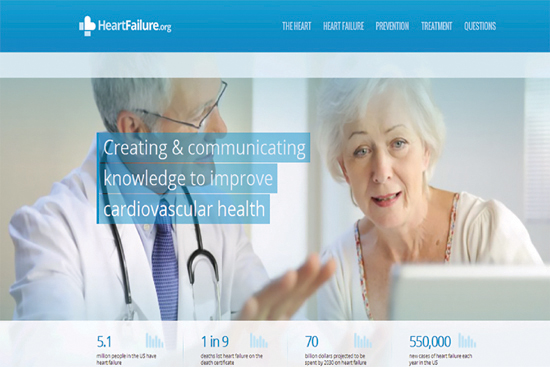CHAPTER 12
A Patient-Oriented Perspective to the 4 Stages of Heart Failure
“For the secret of the care of the patient is in caring for the patient.”
—Francis Peabody1
Lifestyle Recommendations
OUTPATIENT COUNSELING AND EDUCATION
Patient education includes symptom recognition, medication instruction, heart physiology basics, causes of heart failure, and diagnostic testing. Written materials to reinforce verbal instruction are often included. Patients or their families should also know where to get additional information if desired. The Internet represents an increasingly accessible medium for obtaining information regarding all aspects of heart failure conditions and treatment (for example, www.heartfailure.org; Figure 12.1). Involvement of the patient’s family in education and discussions of prognosis is important, because lack of emotional support is a predictor of subsequent cardiovascular events.2

FIGURE 12.1 Example of available Internet resource: www.heartfailure.org.
WORD CHOICE THAT EMPOWERS THE PATIENT
Some of the terminology that is commonplace for physicians can be frightening and intimidating for patients with no medical background. The word “failure” carries a huge burden of connotation that implies a total collapse of the heart, or even worse, a sense of personal failure regarding health. In the Introduction to this book, the word “insufficiency” was suggested as a better description of the actual clinical situation. Heart failure is primarily a mismatch between the needs of the body for circulation and the ability of the heart to pump oxygenated blood. Using “mismatch” implies that there are almost always hygienic and medical interventions to make the situation better, and suggests that balance can be restored.
EXERCISE
Whenever possible, patients should be encouraged to walk on level ground for 20 to 40 minutes or the equivalent, with rest breaks as needed, 4–5 days per week. Some patients may benefit from a structured cardiac rehabilitation program with supervised exercise. Regular exercise leads to long-term decreases in heart rate and blood pressure. For the patient with heart failure, regular exercise may serve to restore neurohormonal balance3—in effect a natural blockade of the aberrant neurohormonal response to long-term heart failure. This “hygienic approach” to neurohumoral withdrawal may contribute to the consistent benefit reported by studies of exercise rehabilitation in patients with heart failure (see HF-ACTION study on next page).
Patients with heart failure often have abnormalities of skeletal muscle physiology that limit their functional capacity, but that may improve with exercise.3 Belardinelli and coworkers found that heart failure patients improved and maintained their peak oxygen consumption over a 10 year period after initiating a 2-times-a-week aerobic exercise training program at 60% baseline peak VO2.4 In non-training patients, peak VO2 progressively decreased. Hare and coworkers found that patients who underwent resistance exercise targeting the chest, shoulder, and knee improved muscle strength and endurance. This type of exercise alone, however, was not associated with an improvement in peak VO2.5
In addition to improving functional capacity, a moderate exercise-training program may reduce other important endpoints in some groups of heart failure patients. The HF-ACTION trial (Heart Failure: A Controlled Trial Investigating Outcomes of exercise traiNing)6 randomly assigned 2,331 patients (median age of 59 years, EF ≤ 35%) to a treatment arm consisting of usual care plus aerobic exercise training versus a treatment arm of usual care alone, with a median duration of follow-up of 30.1 months. Exercise training consisted of 36 supervised sessions followed by home-based training. After adjustment for prognostic risk factors, there was a statistically significant 15% reduction in cardiovascular mortality or heart failure hospitalization in the exercise-training group.
In the same study, patients in the exercise-training group had a greater improvement in functional capacity compared with patients in the usual-care group at 3 months of follow-up. Exercise-training patients showed improvements in median distance in the 6-minute walk test (20 meters vs. 5 meters; P < 0.001), exercise time on the cardiopulmonary exercise test (1.5 minutes vs. 0.3 minutes; P < 0.001), and peak oxygen consumption (0.6 vs. 0.2 mL O2
Stay updated, free articles. Join our Telegram channel

Full access? Get Clinical Tree


